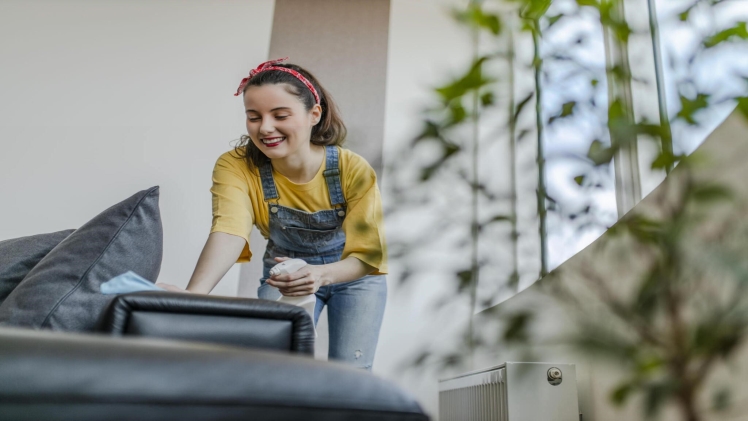With their timeless appeal and sleek lines, leather lounges add a touch of grandeur to any living space. However, this elegance bears a unique responsibility: proper care. Unlike other materials, leather requires specific cleaning techniques and skilful approaches to prevent unwanted damage and maintain suppleness. Here is a simple guide that will clarify leather lounge cleaning, affirming the most effective and safest means to keep your leather looking spectacular.
Understanding Your Leather.
Before getting into the cleaning frazzle, identify and classify your leather type. Leathers fall into two broad categories: finished and unfinished. Finished leather has a protective overlay on the surface, resistant to stains and dirt. Examples include patent and pigmented leather. The material usually requires specialised cleaning products to maintain the protective overlay. However, finished leather can handle harsher cleaning routines, unlike the unfinished option. Unfinished leather lacks a protective coating. The material is prone to moisture damage and staining, affecting durability and looks. Cleaning requires a gentler approach with less corrosive products and tools. Common examples of unfinished leather include nubuck and aniline.
The Arsenal for a Successful Cleaning.
Leather conditioner and cleaner are the most essential weapons in your leather cleaning arsenal. Invest in creditable cleaners and conditioners designed for your specific leather if you want the best results. Microfiber cloths also come in handy. These lint-free, soft tools are the best option for regular, gentle cleaning of leather surfaces, regardless of the type. A vacuum cleaner with a soft brush attachment is also great for removing debris and dust from upholstery and crevices. Using a vacuum means no abrasion during cleaning.
Distilled water is suitable for wiping down surfaces and rinsing spots. Tap water should be avoided at all costs since it might contain minerals that can damage the leather. Distilled water is your best choice for a wet wipe. Mild dish soap is also inexpensive for removing dirt from leather surfaces. However, the recommended soap is the unscented option, free of chemical additives. Before using dish soap, dilute it with water for effectiveness and safety.
Before getting down to cleaning, go through the instructions on each product. Follow the recommendations and steps for a perfect cleaning process. Only use something if you are sure how to use it.
The Gentle Art of Cleaning.
It’s fundamental to know how to approach a dirty leather lounge. Dusting clears built-up grime and dirt and should be your initial go-to cleaning procedure. You can use a microfiber cloth that’s effective at cleaning and gentle on the leather surface. Conditioning is another approach that prevents leather from cracking and keeps it supple. However, using a conditioner that matches your leather type is imperative.
Routine cleaning is sufficient for finished leathers. Mix distilled water and mild dish soap, dump a microfiber cloth and gently wipe down the leather surface. Avoid saturating spots, and remember to dry the leather with a clean cloth. Spot cleaning is also excellent for cleaning spills while preventing spreading and soaking. Vacuuming is helpful for deep cleaning. A soft brush attachment on the vacuum cleaner allows dust clearance along hard-to-reach nooks and crevices.
Professional leather cleaning is the best and safest way to keep your lounge clean. It’s a pricer option but worth every penny. Combining a bi-annual professional cleaning service with your routine cleaning procedures will keep your leather looking brand new.
Alternative ways to improve Leather Lounge Longevity?
Apart from self-maintenance and cleaning, you can improve your leather lounge longevity by minimising exposure to direct sunlight and humidity. Furthermore, protect your leather from pets. Ultimately, contacting professional cleaners offers the best results for longevity and aesthetics.
Maintaining a leather lounge is not a complex affair; however, it needs care and knowledge. By practising preventive measures, using the right tools and techniques, and understanding your leather requirements, you can maintain a benevolent lounge for a long time.

